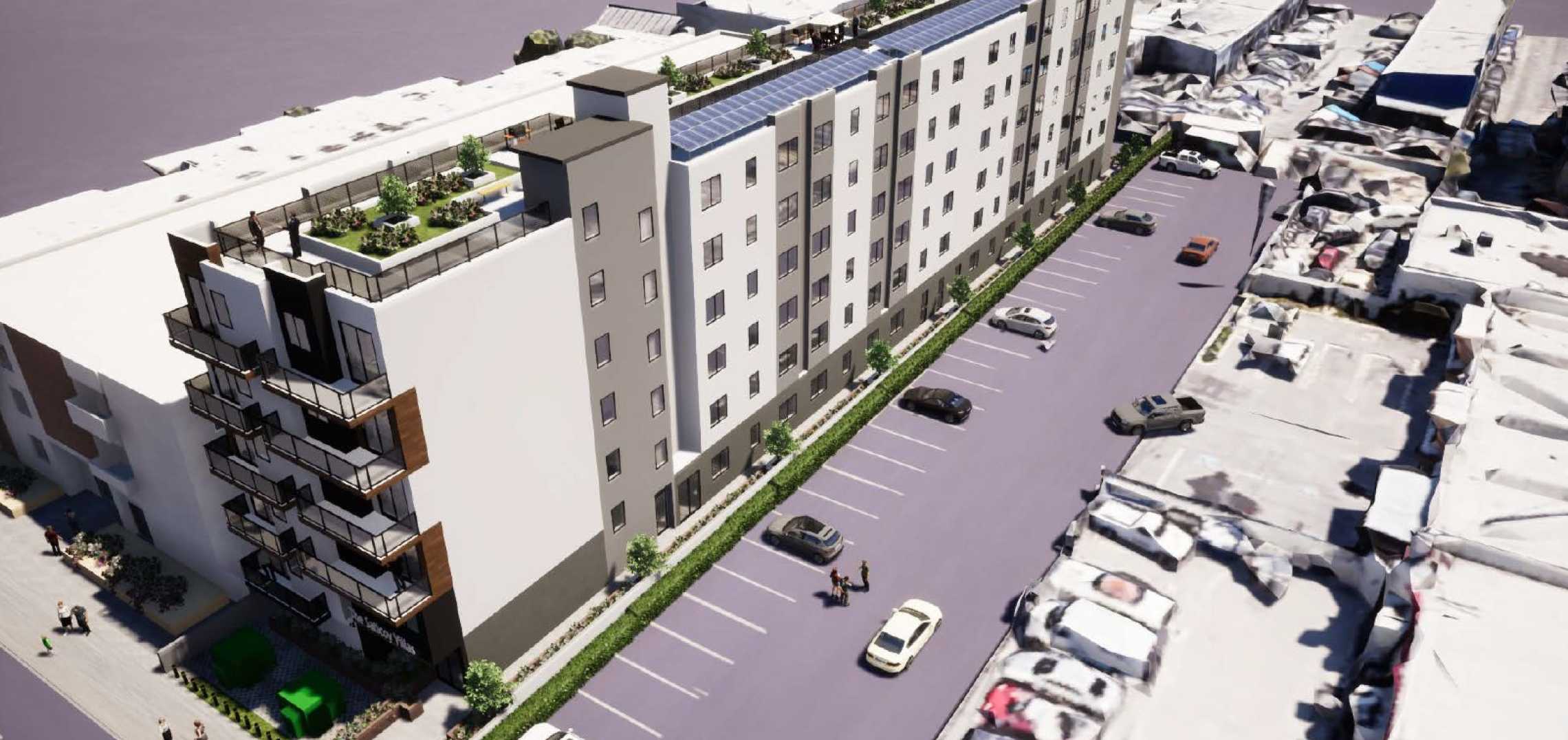Affordable housing to rise at 14533 W. Saticoy Street in Van Nuys – Urbanize LA

Affordable Housing Development Planned near Van Nuys Metrolink Station
An application has been submitted to the Los Angeles Department of City Planning for the development of affordable housing near the Van Nuys Metrolink Station. The proposed project, submitted by Western Imperial 2000, LLC, calls for the construction of a new six-story building with 97 apartments of various sizes.
Emphasis on Sustainable Development Goals (SDGs)
- Goal 11: Sustainable Cities and Communities
- Goal 1: No Poverty
- Goal 10: Reduced Inequalities
The project seeks density bonus incentives to allow for a larger structure than zoning rules would typically permit. It also relies on state bills AB 2334 and AB 2097 to permit unlimited density and eliminate the requirement for parking.
California Development & Design Inc. has been tasked with designing the project, which will be a contemporary podium-type building that fits the long, narrow dimensions of the site.
Location and Accessibility
The development is conveniently located within walking distance of the Van Nuys Metrolink Station. It will also be in close proximity to a future stop on the East San Fernando Valley light rail line, which is set to break ground next year on Van Nuys Boulevard.
Follow us on social media:
Additional Information
- Van Nuys (Urbanize LA)
- Looking for affordable housing? Visit lahousing.lacity.org/aahr and housing.lacounty.gov
- California’s 2024 state income limits
- Click here for additional affordable housing resources
SDGs, Targets, and Indicators
1. Which SDGs are addressed or connected to the issues highlighted in the article?
- SDG 1: No Poverty
- SDG 11: Sustainable Cities and Communities
- SDG 17: Partnerships for the Goals
2. What specific targets under those SDGs can be identified based on the article’s content?
- SDG 1.4: By 2030, ensure that all men and women, in particular the poor and the vulnerable, have equal rights to economic resources, as well as access to basic services, ownership, and control over land and other forms of property, inheritance, natural resources, appropriate new technology, and financial services, including microfinance.
- SDG 11.1: By 2030, ensure access for all to adequate, safe, and affordable housing and basic services and upgrade slums.
- SDG 17.17: Encourage and promote effective public, public-private, and civil society partnerships, building on the experience and resourcing strategies of partnerships.
3. Are there any indicators mentioned or implied in the article that can be used to measure progress towards the identified targets?
- Indicator for SDG 1.4: Percentage of population living below the national poverty line.
- Indicator for SDG 11.1: Percentage of urban population living in slums, informal settlements, or inadequate housing.
- Indicator for SDG 17.17: Existence of partnerships and cooperation mechanisms at the national, regional, and international levels.
Table: SDGs, Targets, and Indicators
| SDGs | Targets | Indicators |
|---|---|---|
| SDG 1: No Poverty | SDG 1.4: By 2030, ensure that all men and women, in particular the poor and the vulnerable, have equal rights to economic resources, as well as access to basic services, ownership, and control over land and other forms of property, inheritance, natural resources, appropriate new technology, and financial services, including microfinance. | Percentage of population living below the national poverty line. |
| SDG 11: Sustainable Cities and Communities | SDG 11.1: By 2030, ensure access for all to adequate, safe, and affordable housing and basic services and upgrade slums. | Percentage of urban population living in slums, informal settlements, or inadequate housing. |
| SDG 17: Partnerships for the Goals | SDG 17.17: Encourage and promote effective public, public-private, and civil society partnerships, building on the experience and resourcing strategies of partnerships. | Existence of partnerships and cooperation mechanisms at the national, regional, and international levels. |
Source: la.urbanize.city








